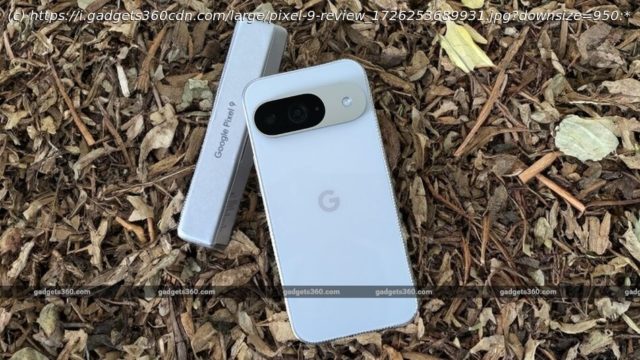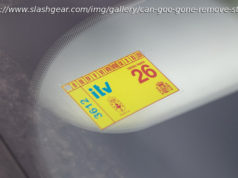Pixel 9, Google’s latest offering, flaunts a sophisticated design and a vibrant display. Its camera system, equipped with a 50-megapixel sensor, delivers exceptional photo quality, especially in low-light conditions. The ultrawide lens and autofocus selfie camera further enhance its versatility. However, the Tensor G4 chip’s performance is a letdown, leading to overheating issues.
Google’s latest Pixel 9 lineup now consists of four phones instead of two, and there’s a size and shape for everyone. Do you want a compact phone? You have the Pixel 9 and Pixel 9 Pro. Do you like big screens and can’t lie? There’s the Pixel 9 Pro XL. And finally, there’s the Pixel 9 Pro Fold for all the productivity freaks. You also get updated designs with the new Pixel phones. While you can still tell they’re Pixel phones from the back, the smaller Pixel 9 looks a lot like the Samsung Galaxy S24 from the front.
And because it’s a Google phone, you also get plenty of new AI features. I’ve been using the base Pixel 9 for almost a week now, and while it feels like a mature piece of hardware, it’s still not quite there yet. If you want to understand what I mean, you should read the full review.
The Pixel 9 is available in India in a single 12GB RAM and 256GB storage option at Rs. 79,999.
In terms of design, everything is now flat, and everything is iPhone 15 and Samsung Galaxy S24-like. The phone has an aluminium flat frame with rounded corners and a matte finish that reminds me very much of the iPhone. The smallest Pixel is also no longer as compact as it once was. The Pixel 9 is taller and wider than both the iPhone 15 and the Galaxy S24. Also gone is the camera visor, which is replaced by a camera bar that runs horizontally across like the visor, but it’s now pill-shaped, resembling the Google search bar. However, you can still tell it’s a Pixel phone.
The rear panel is a slab of Gorilla Glass Victus 2 with a polished finish and a Google logo positioned at the centre. The right frame houses the power and the volume buttons, and there’s a microphone up top, a USB Type-C port, a speaker grille, a SIM card tray, and another mic at the bottom. The left side is left empty. The new flat design makes it feel more flagship and premium now, but I prefer the curved back design and the camera visor look of the Pixel 8.
Pixel 9 is now also taller than its predecessor, but that’s mainly due to the slightly bigger display. It also retains the IP68 rating, and that camera bar can still be used as a finger rest.
The display on the Pixel 9 is now bigger and brighter than the Pixel 8, but it also has uniform and slim bezels all around. It looks like Google finally decided to wrap the display inwards at the bottom to get rid of the thicker chin on previous non-pro Pixel phones. The new 6.3-inch OLED display, which Google has branded ‘Actua’, offers 2,700 nits of peak brightness, 24-bit depth for colours, and an adaptive refresh rate between 60 and 120Hz. It’s still not an LTPO panel, but it is definitely better than the older model.
You get excellent colour output and plenty of contrast, and it also does justice to HDR videos. The panel supports both HDR10 and HDR10+, and you will get Widevine L1 certifications. The software offers Natural and Adaptive colour modes. While I had no problem using the Pixel 8 outdoors, the Pixel 9 is even better, and everything’s easier to read.
Pixel 9’s display houses a hole-punch cutout at the top and now offers an ultra-sonic in-display fingerprint sensor. This is a nice upgrade from the optical one on the Pixel 8, which was slower and less accurate than other flagship phones. The new fingerprint scanner on the Pixel 9 finally gets it on par with other flagships, and it works great. It’s fast and works even with wet fingers.
Pixel phones were known for their cameras, but now they’re also known for their AI software features. And there’s a lot on the new Pixel 9 lineup. The Pixel 9 runs Android 14 out of the box, and I received the September security patch during the review period. This is a bit strange for a new Pixel phone, as the Pixels of the past have almost always run the newest Android version out of the box. However, the Pixel phones came early this year, and Android 15 just hit AOSP.
Luckily, Google continues to promise 7 years of OS and security updates on its flagships, so the phones should be good for a while, at least software-wise. There’s a new Weather app on the phone, and you get plenty of customisation options across the system.
Now, let’s talk about the phone’s AI features. You can now use Gemini Live with the Google One 2TB plan that gets you a free month of Gemini Advanced. It lets you use the Gemini 1.5 Pro model with a 1 million token context window, which basically enables you to throw complex problems at the AI assistant without worrying about any limit. You also get access to Gemini Live, which I found to be super useful and very impressive. It worked flawlessly and had a very natural tone. I did find it hallucinate sometimes, but the ability to have a free-flow conversation with an AI is quite cool. It’s like the ChatGPT Voice option on the ChatGPT app.






